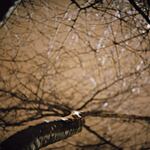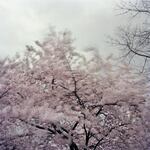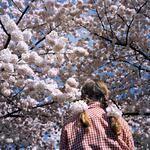
Motoya Nakamura
"In Japan, cherry blossom is called 'sakura.' They always reminded me of home. Every time I saw them ... I felt very nostalgic," says Portland photographer Motoya Nakamura. His latest series, Sakura Sakura, is currently on display at the Oregon Nikkei Legacy Center.
Nakamura, who was born and raised in Nagoya, Japan, moved to the United States in 1989 to earn a degree in journalism. He came to Portland in 2000 and worked as a staff photographer for The Oregonian. Today he teaches photography classes and pursues his own photography projects.
“When I moved to Portland ... always during my commute, I took First Avenue to come back from work,” recalls Nakamura. Every spring, he observed the cherry blossoms at Tom McCall Waterfront Park as they came into bloom and eventually fell from the trees, leaving them bare.
For Sakura Sakura, Nakamura photographed 12 images of the cherry trees that are planted at the Japanese American Historical Plaza and Bill of Rights Memorial at Tom McCall Waterfront Park. The cherry trees that grow in the plaza originally came from Japan. The trees were planted in 1990 when it was dedicated to commemorate people of Japanese ancestry who were sent to internment camps during World War II. This exhibit, funded in part through a grant from the Regional Arts & Culture Council, kicks off the 25th anniversary celebration of the Japanese American Historical Plaza and Bill of Rights Memorial.
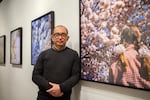
Photographer Motoya Nakamura
Kayo Lackey / OPB
According to Nakamura, sakura holds a specific symbolism for many Japanese people.
“Sakura lives only for a short period of time, usually two to three weeks," says Nakamura. "Trees live a long time, but the blossoms ... they last only for a few weeks. They are always incredibly beautiful. So, in Japan, people say ... ‘Live like sakura. You know ... life is short ... Just don’t leave any regret when you depart.’
Initially, the cherry trees Nakamura saw during his daily commute reminded him of Japan. But then he did some research on Japanese-American history and that added another layer of complexity to the way he views sakura.
“That kind of made me think about ... what was it like to be the first generation of Japanese-American people who moved to this country during the turn of century and then experienced World War II," explains Nakamura.
After spending half of his life in Japan and half of his life in the United States, Nakamura says he feels like a stranger in both countries. "All of these things just started to build up in my mind and then ... I kind of felt urged to explore the notion of my identity,” he adds.
Nakamura began photographing the cherry trees in 2007, but felt he had more to do. After securing a grant from the Regional Arts & Culture Council, he resumed his project in 2014, sometimes capturing images of the trees before sunrise or in the middle of the night.
"This series Sakura Sakura is to me … it's my ongoing conversation between me and sakura," says Nakamura. "I don't want to sound crazy, but I felt like they were talking to me."
One cold night in the winter, he photographed a trunk of a cherry tree covered with snow.
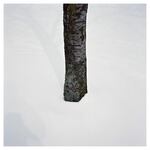
Motoya Nakamura
“When I photographed that ... Of course there is no blossoms and snow covered the whole ground, hid everything, and then simplified everything," he explains. "To me, everything got kind of clear at that moment. Then the snow melts and everything got complicated again ... But there is a moment of clarity ... At least a photograph shows me that there is a possibility and even hope that you might get that kind of ... clarity.”
Todd Mayberry, director of collections and exhibits at the Oregon Nikkei Legacy Center, says the close proximity of the exhibit to the actual trees that Nakamura photographed — Tom McCall Waterfront Park is just a few blocks away — provides a special opportunity for visitors to extend their appreciation of the exhibit outside of the museum.
[event: sakura-sakura-an-exhibition-of-photographs-by-motoya-nakamura,left,54ff219764247d00bac08dc0]
"Come to our museum, check out this wonderful, incredible show, but also take the time to go out and enjoy ... these incredible trees," says Mayberry. "[We hope people will] be able to draw the connections beyond the walls of our museum.”
Nakamura also hopes people will find meaning in Sakura Sakura. However, he does not want to impose his own interpretations of his photographs onto others. Instead, he hopes his images will inspire people to think about their own lives.
“This might not make good sense, but I hope my photographs will talk to the viewers," he says. “Everybody comes from a different background. Not everybody from Japan, of course ... I want them to experience in their own ways, reflecting on themselves.”

